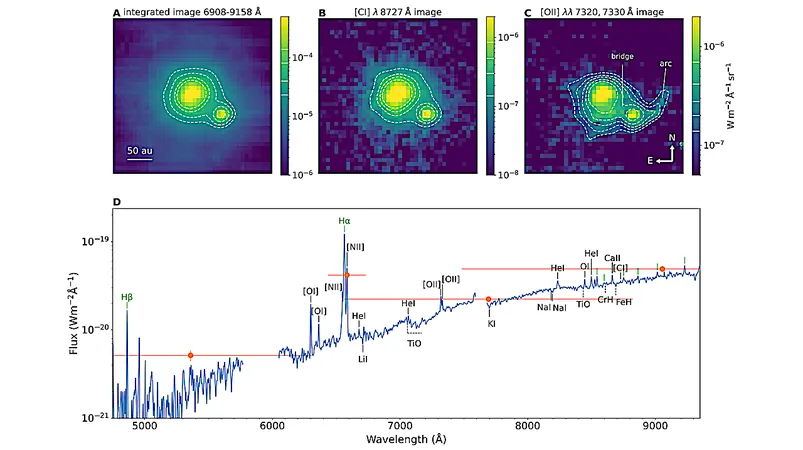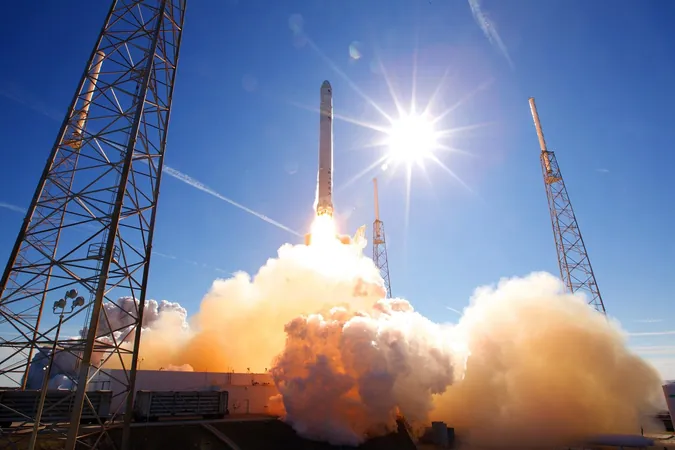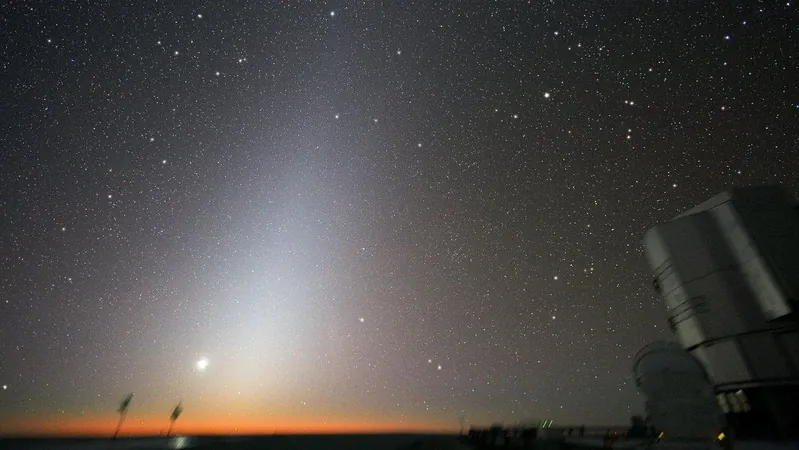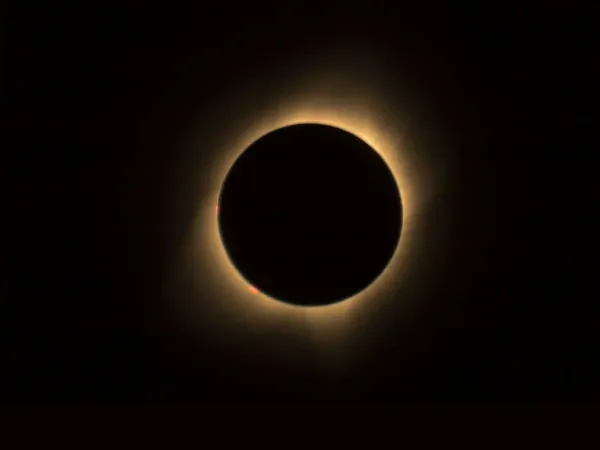
Exciting Discovery: A Young Planetary-Mass Companion in Orion!
2025-09-20
Author: Olivia
Astronomers Make Groundbreaking Observations of a New Planetary-Mass Companion
In an astonishing breakthrough that illuminates the mysteries of our universe, researchers have turned their telescopes towards the Orion Nebula and uncovered a young planetary-mass companion (PMC). This celestial body, known as V2376 Ori b, is believed to be less than 10 million years old, making it a key object in studying planetary system formation.
The Search for Young Planets: A Rare Find
To date, only about a dozen PMCs have been spotted through direct imaging, making this discovery all the more significant. Utilizing the powerful JWST/NIRCam, scientists conducted observations that led to the identification of a faint point source located near the M-type star V2376 Ori. The hunt for young planets just got a lot more intriguing!
Confirming a Cosmic Connection
Follow-up observations using the MUSE instrument on the Very Large Telescope (VLT) have confirmed that this newly found object is indeed a young planetary-mass companion, sitting about 80 parsecs away in the bustling Trapezium cluster. With an estimated age of around 7 million years, V2376 Ori b provides unique insights into the early stages of planetary evolution.
Mass and Accretion Rates: What Did We Discover?
Estimations based on the spectral energy distribution (SED) suggest that V2376 Ori b has a mass of roughly 20 Jupiter masses. The MUSE spectrum has unveiled fascinating accretion tracers. Shockingly, the intensity of the Hα line points to an accretion rate of about 10^-6.5 MJup per year, comparable to other young PMCs like PDS 70b.
A Potential Interaction: Two Accretion Disks at Play?
Moreover, the MUSE data indicates extended emissions in the [O II] doublet at 7320 and 7330 Å. This observation suggests a dynamic interaction between V2376 Ori b and another source nearby, hinting at a possible mass transfer occurring between their individual accretion disks, an exciting prospect that could reshape our understanding of how planetary systems develop.
The Future: Unlocking More Cosmic Secrets!
These groundbreaking results underscore the power of JWST/NIRCam imaging surveys in unearthing new PMCs. With further follow-up spectroscopic studies from ground-based observatories, astronomers are poised to unlock even more secrets about the formation of planets and the dynamics of their accretion processes.









 Brasil (PT)
Brasil (PT)
 Canada (EN)
Canada (EN)
 Chile (ES)
Chile (ES)
 Česko (CS)
Česko (CS)
 대한민국 (KO)
대한민국 (KO)
 España (ES)
España (ES)
 France (FR)
France (FR)
 Hong Kong (EN)
Hong Kong (EN)
 Italia (IT)
Italia (IT)
 日本 (JA)
日本 (JA)
 Magyarország (HU)
Magyarország (HU)
 Norge (NO)
Norge (NO)
 Polska (PL)
Polska (PL)
 Schweiz (DE)
Schweiz (DE)
 Singapore (EN)
Singapore (EN)
 Sverige (SV)
Sverige (SV)
 Suomi (FI)
Suomi (FI)
 Türkiye (TR)
Türkiye (TR)
 الإمارات العربية المتحدة (AR)
الإمارات العربية المتحدة (AR)